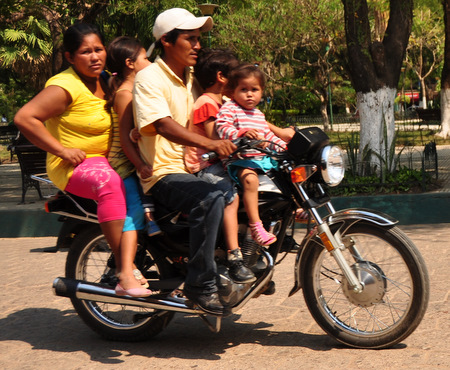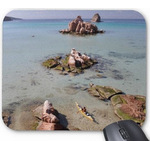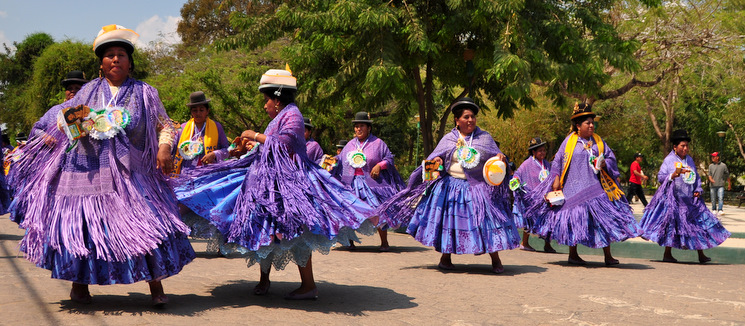• Logbook
• Road Stars
Photo album:
• Vírgen de Urkupiña Festivities
• How to ride a motorbike in Trini
Lodging and eating:
• Piesta Hotel
From August 14 to 16, 2011: Trinidad
It seems we have arrived just in time to witness the festivities of La Virgen de Urkupiña. At noon on Sunday, several folkloric groups parade around the main square wearing their traditional dresses and dancing to the tunes the bands that follow them play. In most groups, men and women go separately. The women wear dresses made with overlapping skirts. Men's costumes are western style and the only thing that stands out is the rattle that sounds in sync with the music. In between each other, girls dressed like drag queens walk on their platforms in glittering costumes. There is another striking character. This is a man with a typical mask from the Oruro carnival. The poor guy wears a beautiful electric blue long thick jacket embroidered but the 97 degrees must be cooking him inside. We follow them to the Pompeya neighborhood, where the parade ends and the rounds of cold beer begin.

The following day is dedicated to museum visits. First the Ethnoarchaeological, consisting of two distinct parts. The first part exhibits the costumes of the traditional dances of Beni, of which the most famous is Los Macheteros of San Ignacio de Moxos. The highlight of this dress is the semicircular crown made of macaw tail feathers. Most of the dances in the department of Beni have a religious origin, but mix indigenous elements. The second part of the museum displays some pottery and aerial photographs of the hydraulic cultures from the flooding areas of the Beni region. It is assumed that before the conquistadores arrived, there was a culture that knew how to build channels and platforms on high grounds to control seasonal flooding and use it to their advantage. By means of redirecting rivers and accumulating water in artificial lagoons, they kept the land for their crops moist but not waterlogged. Little is known of these cultures due to the lack of studies, but also because of the few remains that have been found in good condition. The climate and especially the humidity of the region favor the aging and destruction of archaeological remains.
The other two museums we visit are the fish and botanic museums, located on campus. The first preserves 400 species of fish from the Amazonian region of Beni in formaldehydetanks. Among others, we can see a young specimen of the pink Bolivian river dolphin locally known as bufeo, a chuncuina over five feet long and several species of piranha. The side comments of the girl who guides us are funny: how to cook some of the species and how tasteful they are. The botanical museum shows collections of seeds, fruits and wood of the flora of the Beni department. Back in the city we witness how the firefighters capture a porcupine that had climbed on a roof. The poor thing is cornered but defends itself with its spines against the 3 the firefighters that are needed to catch him.




